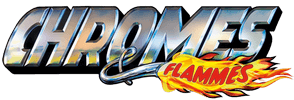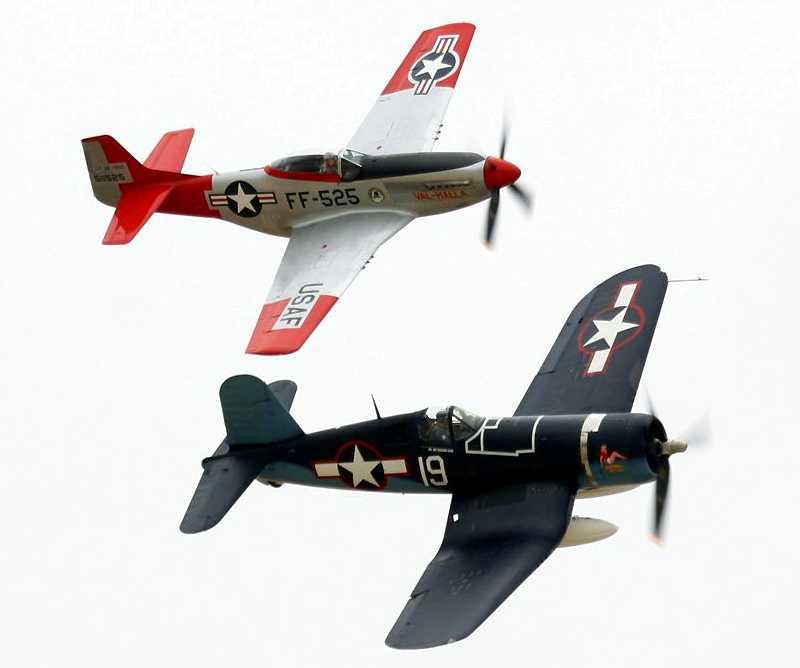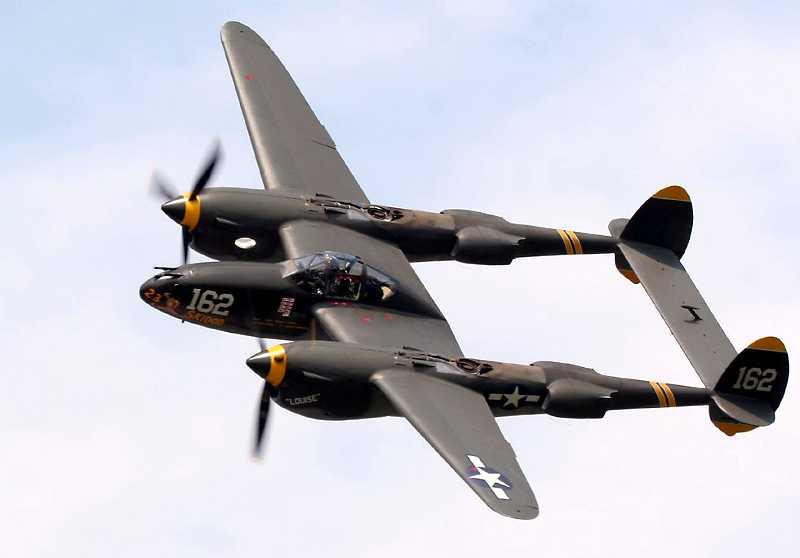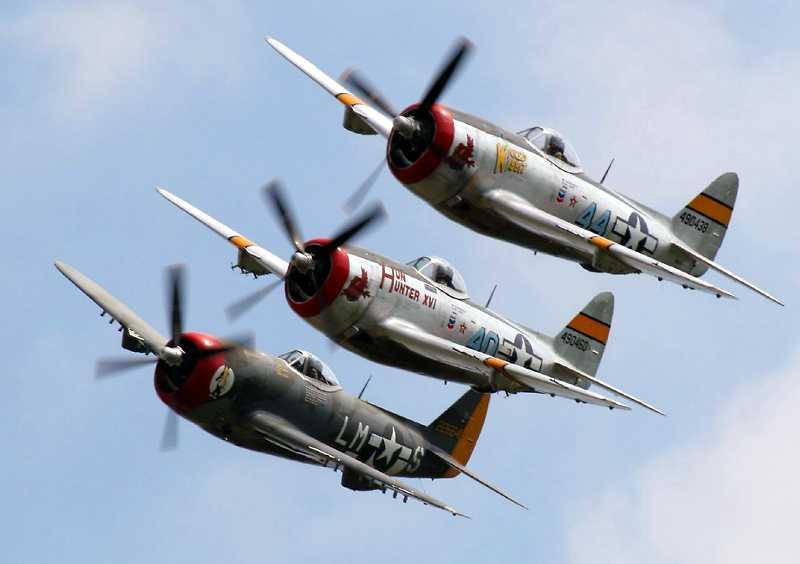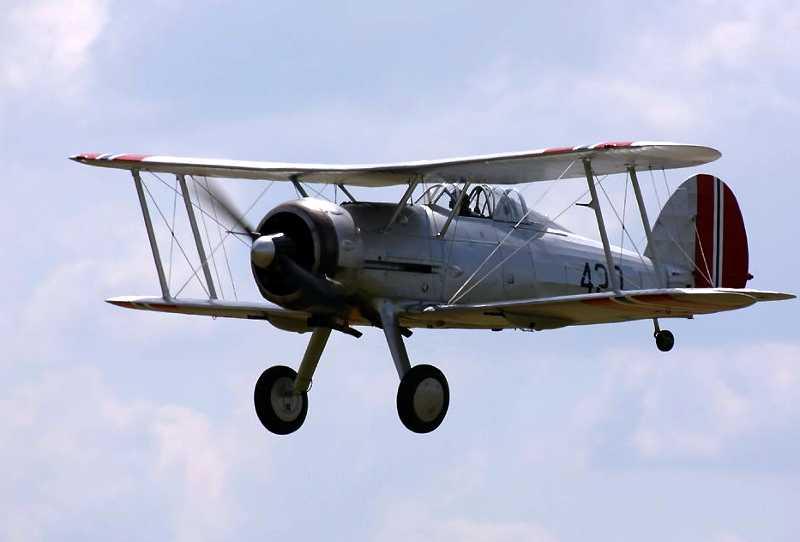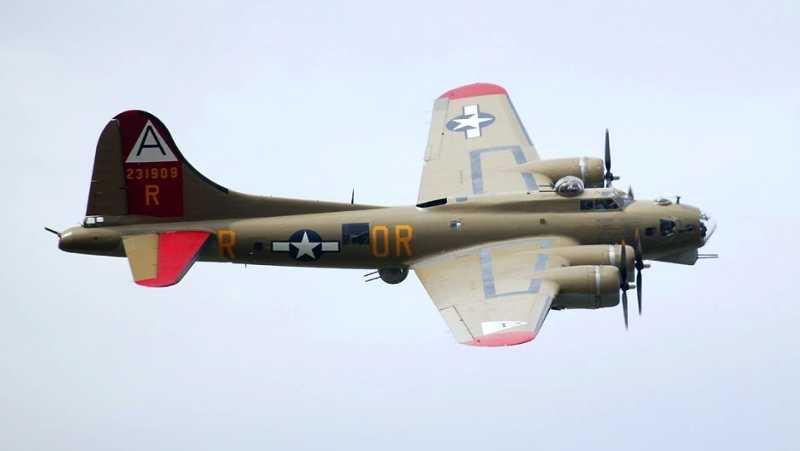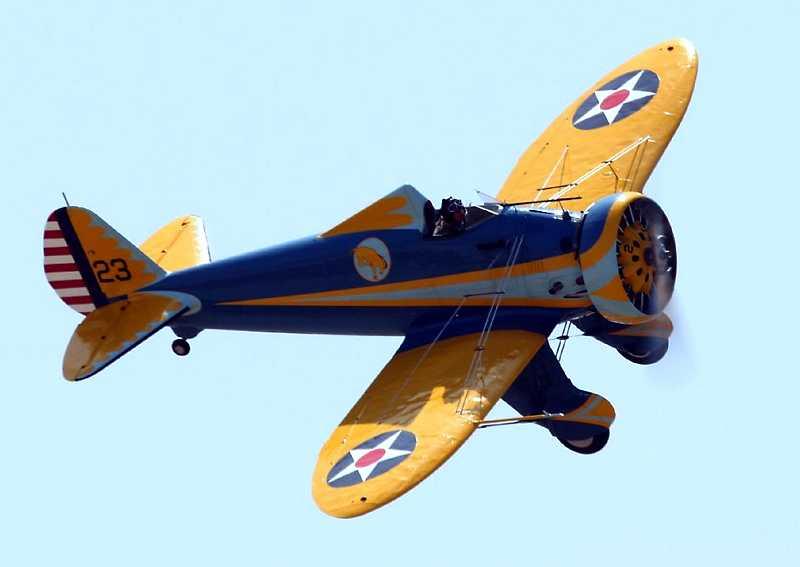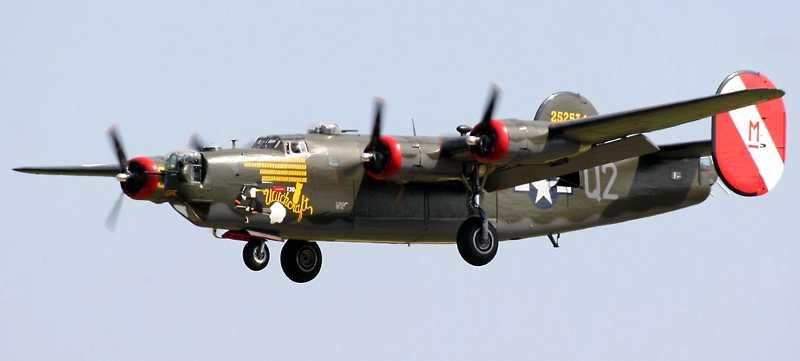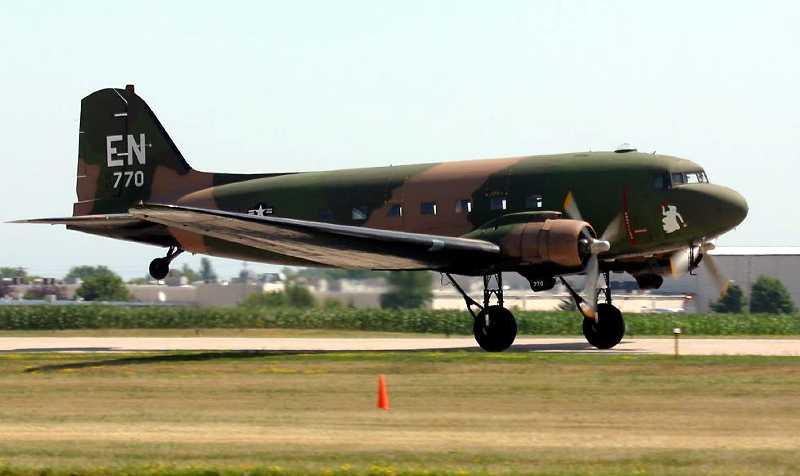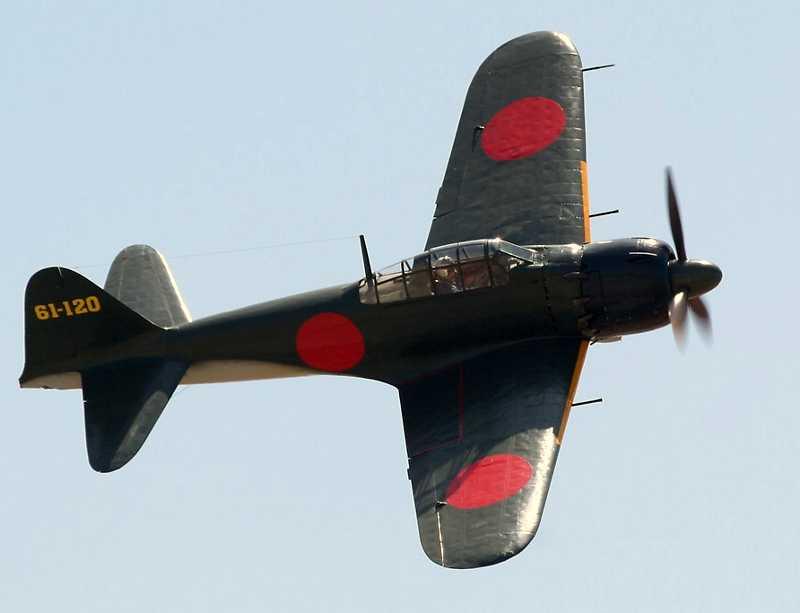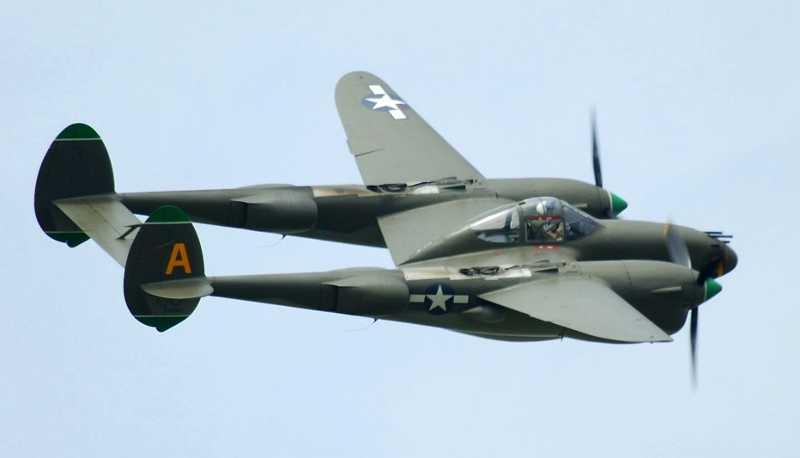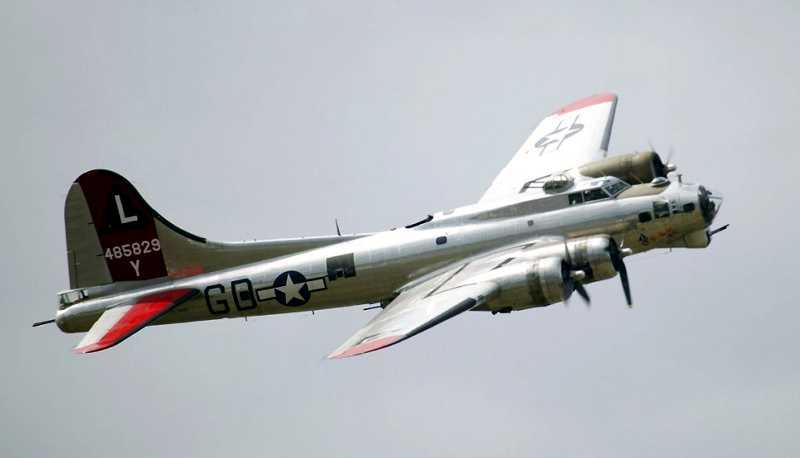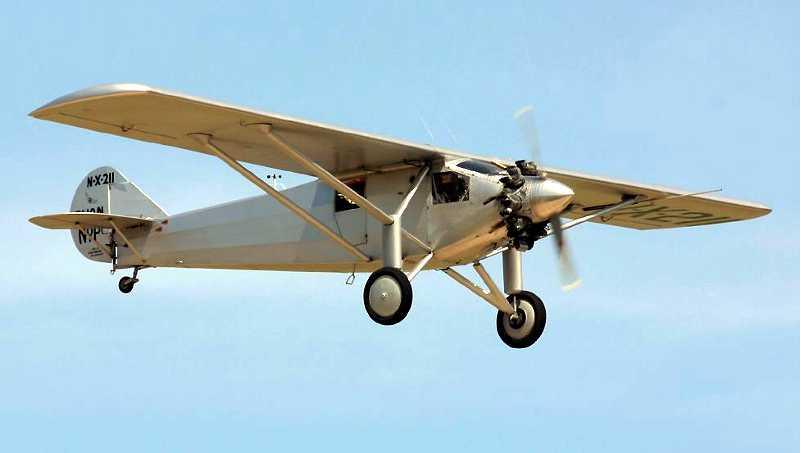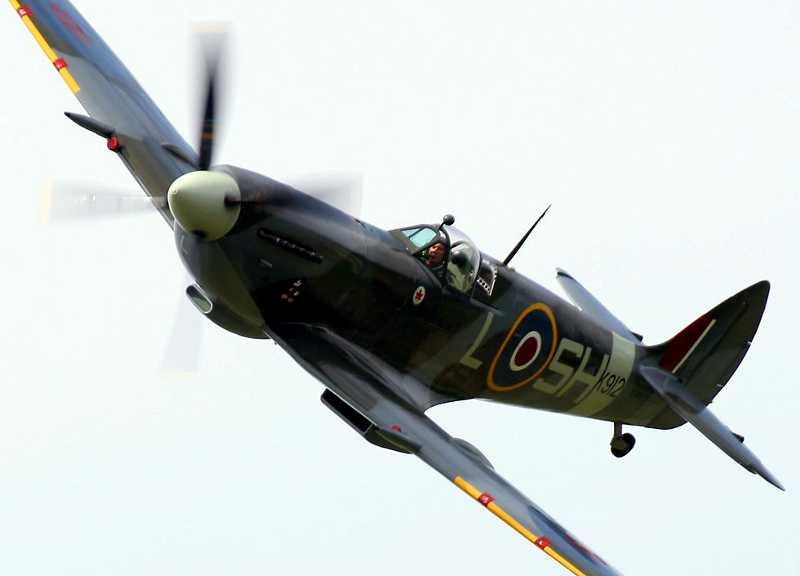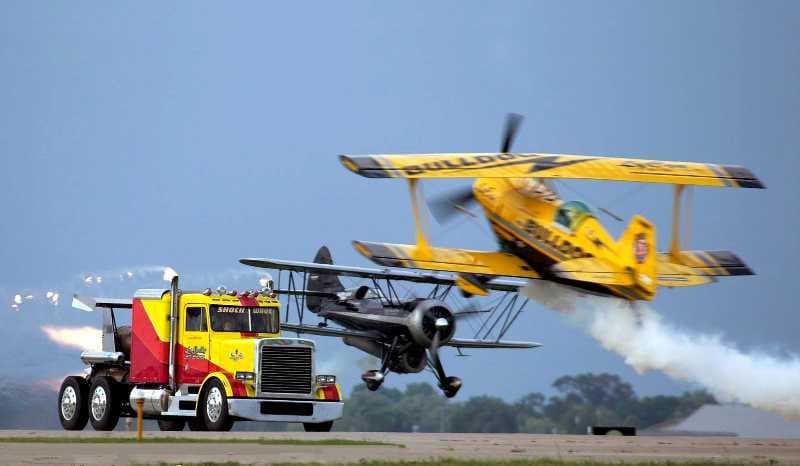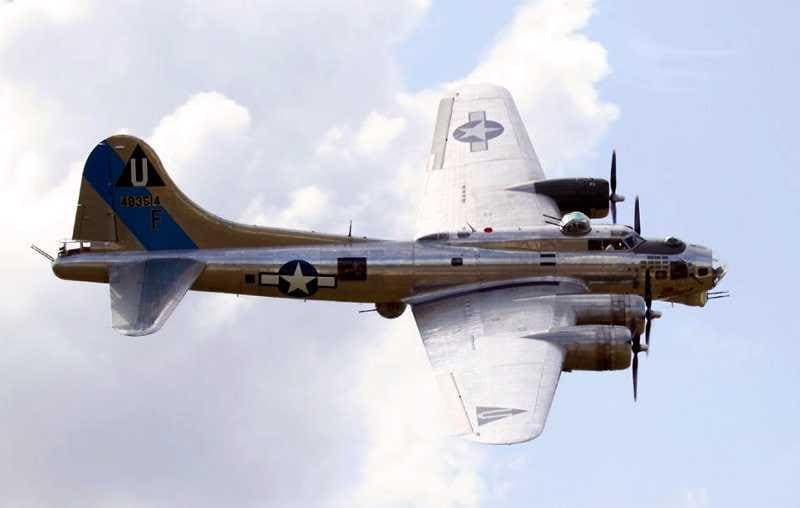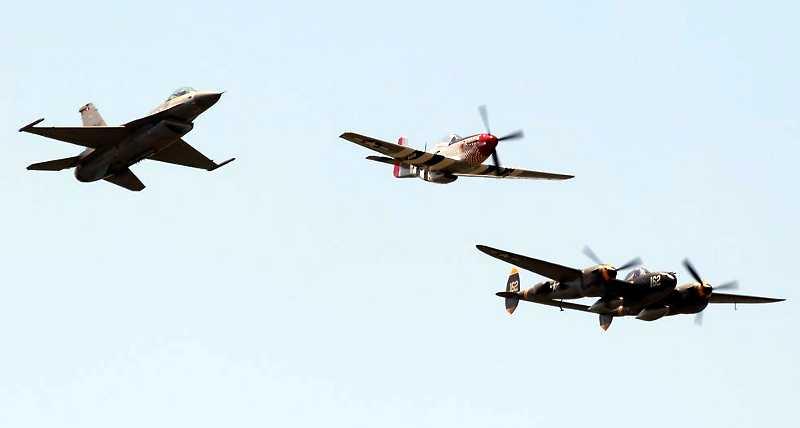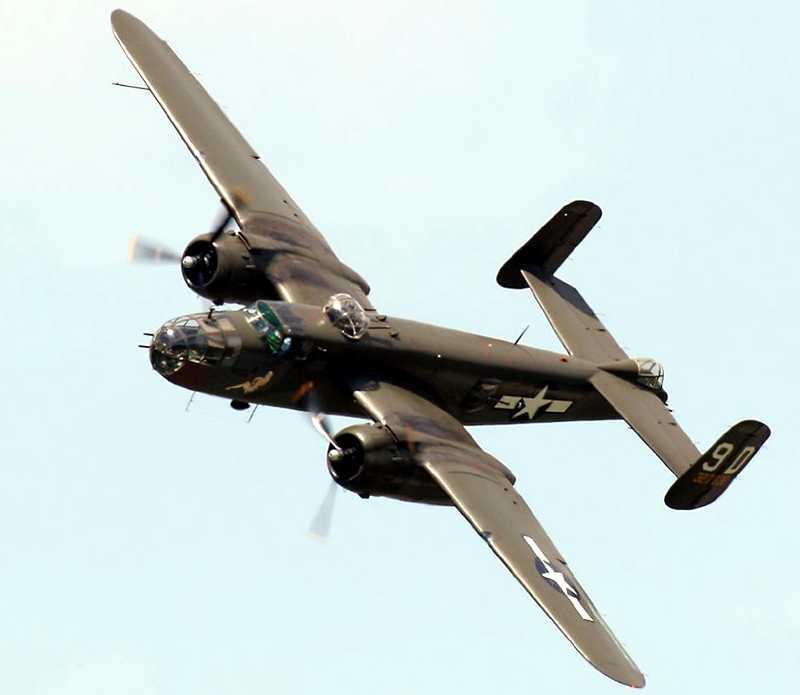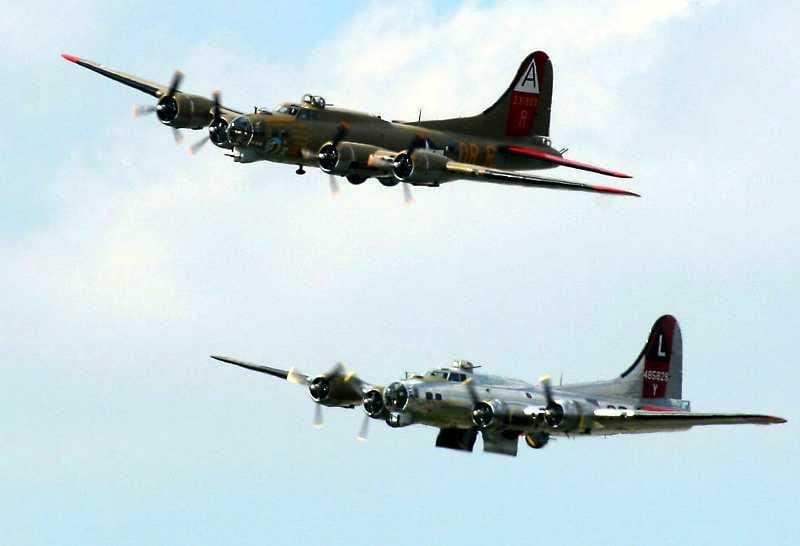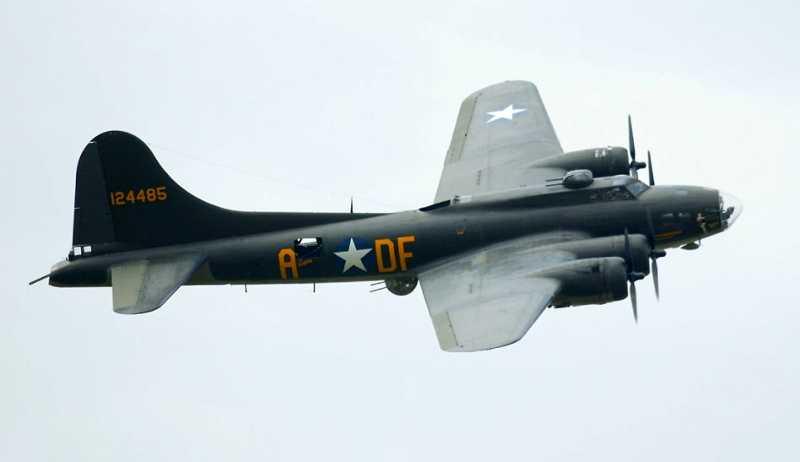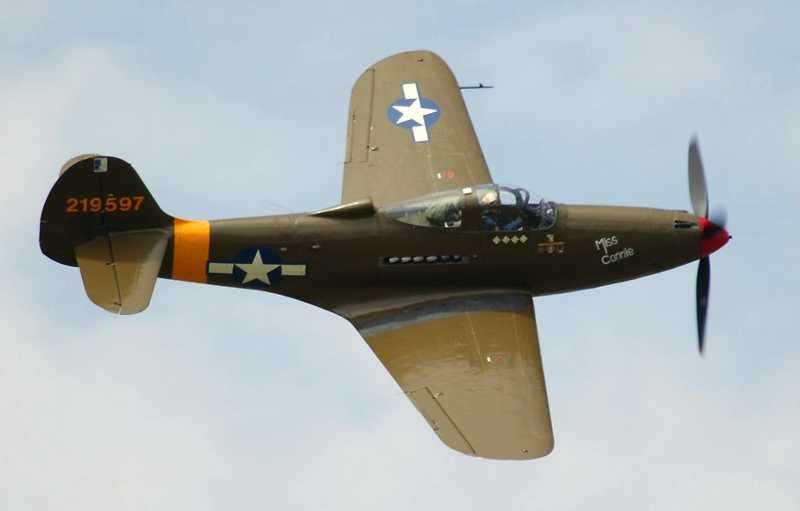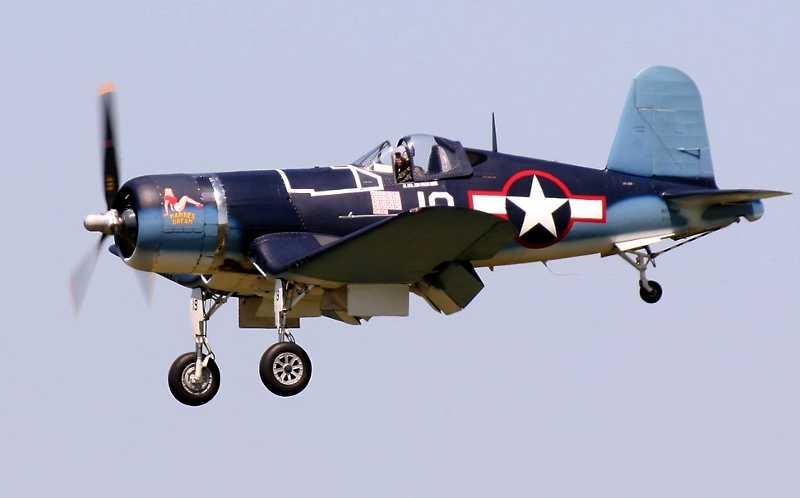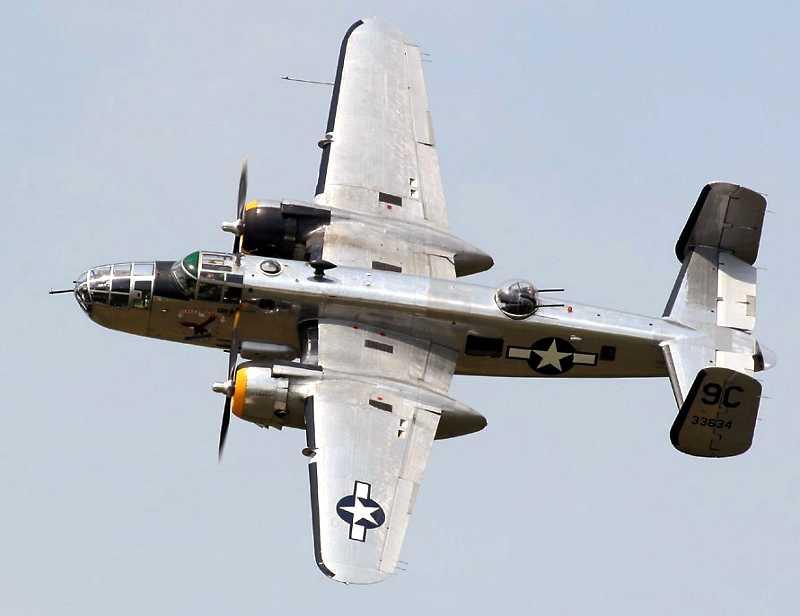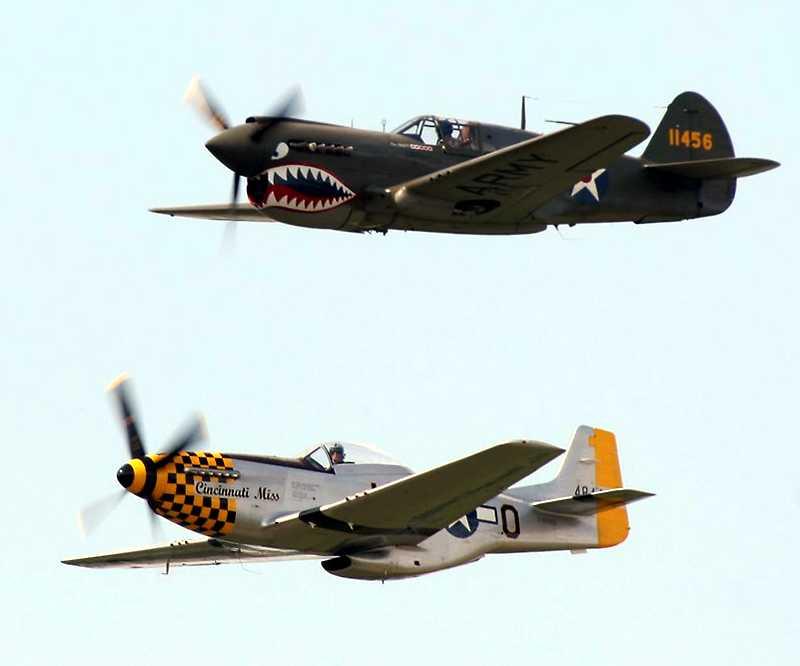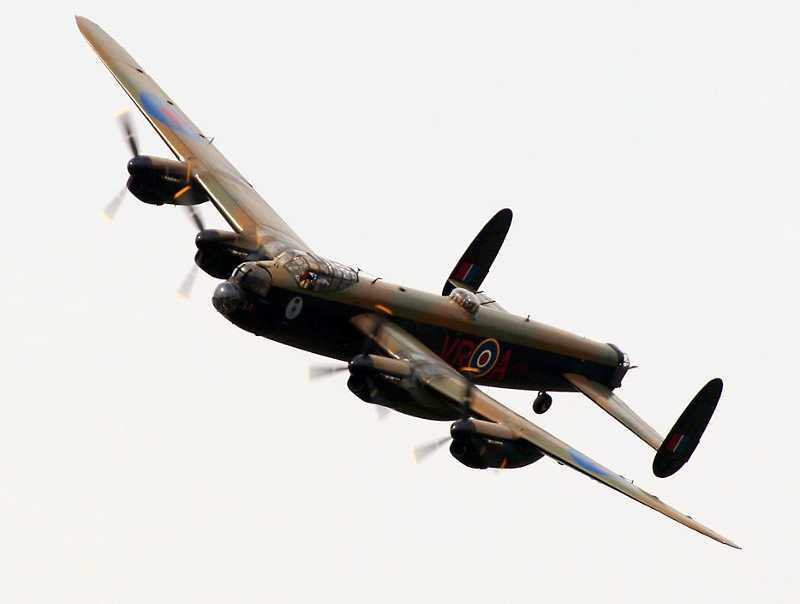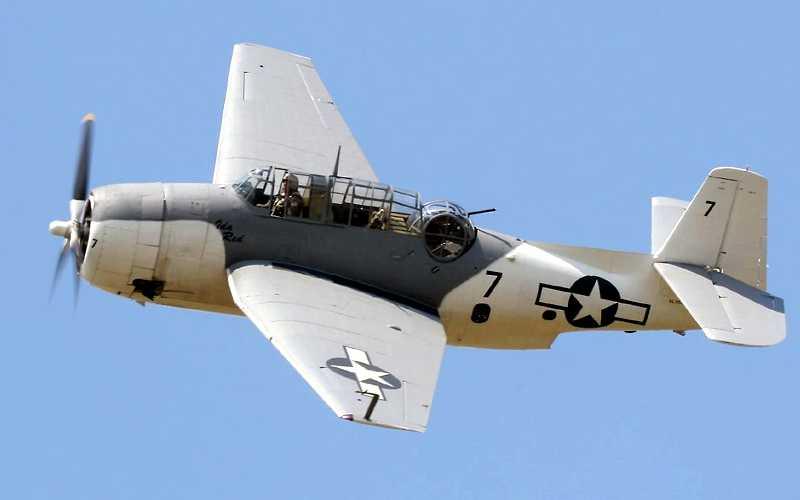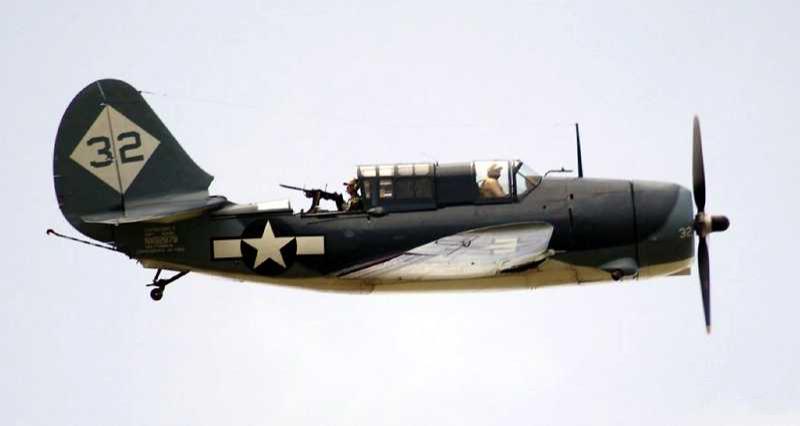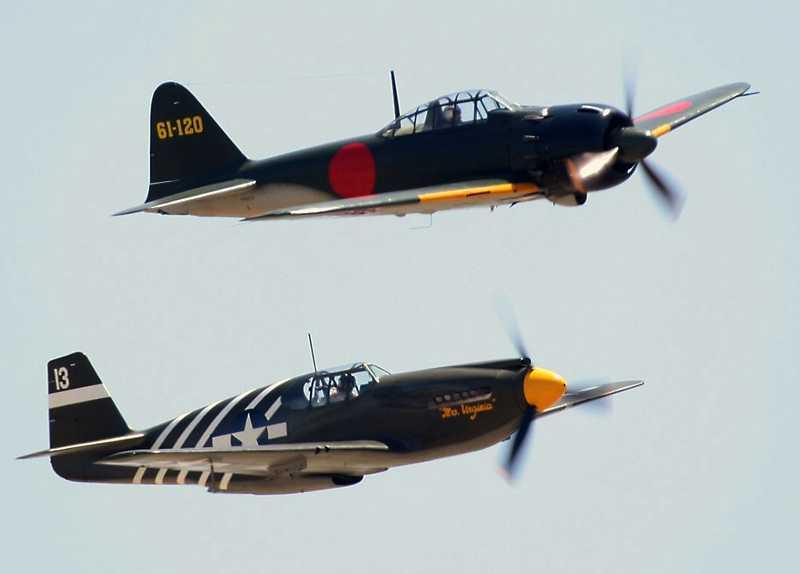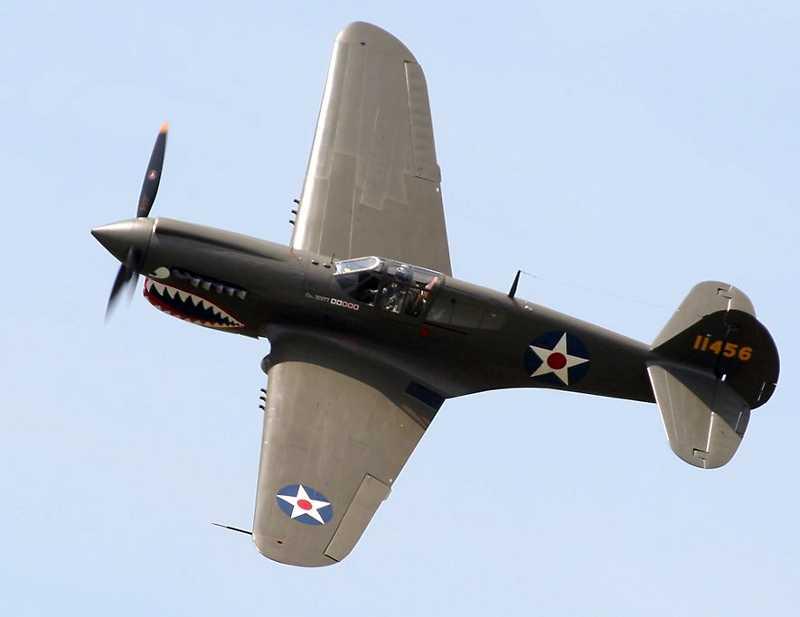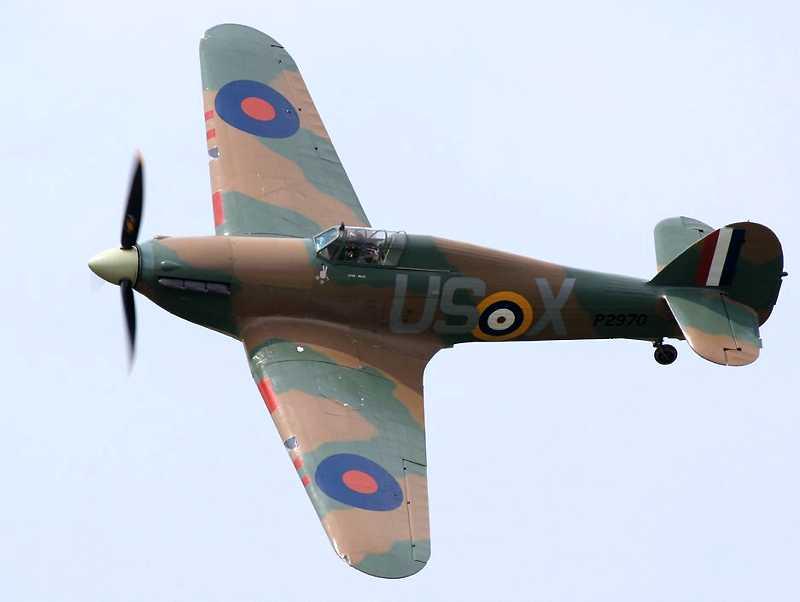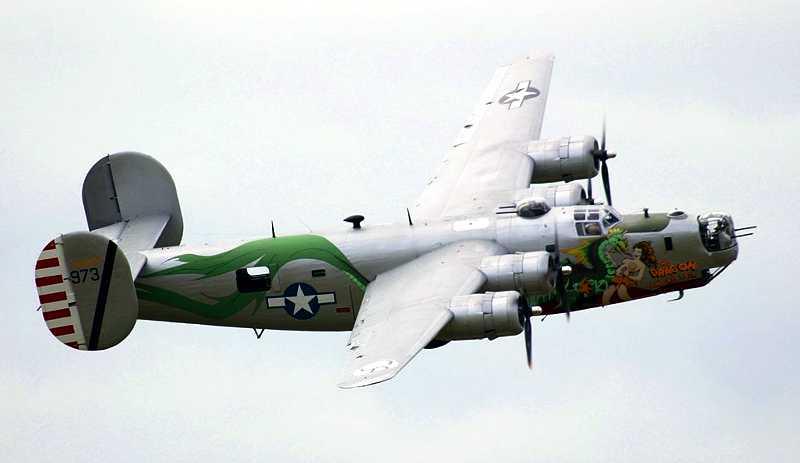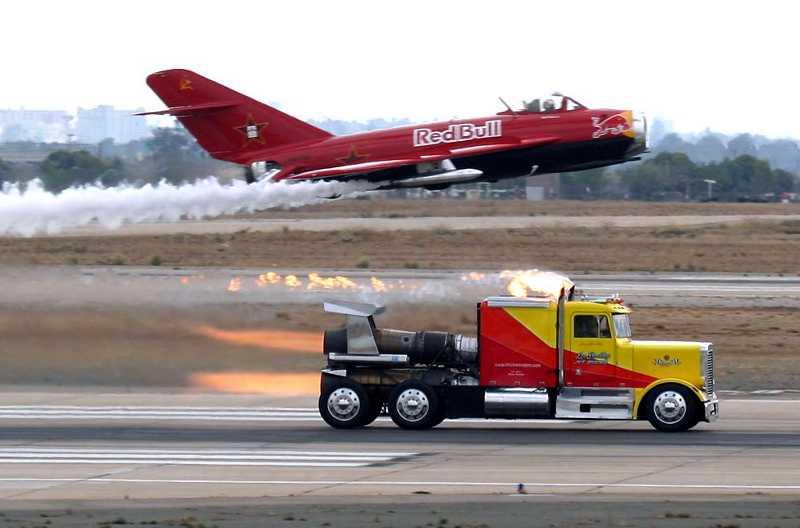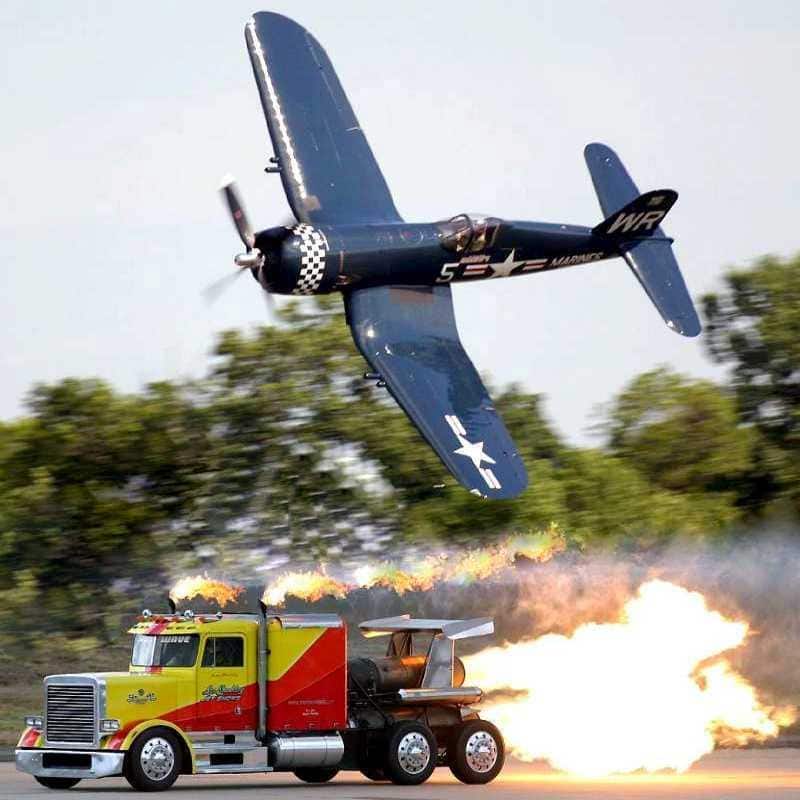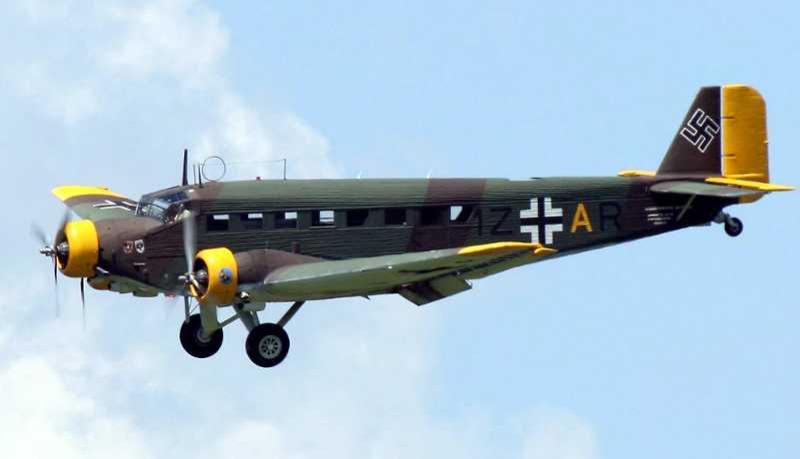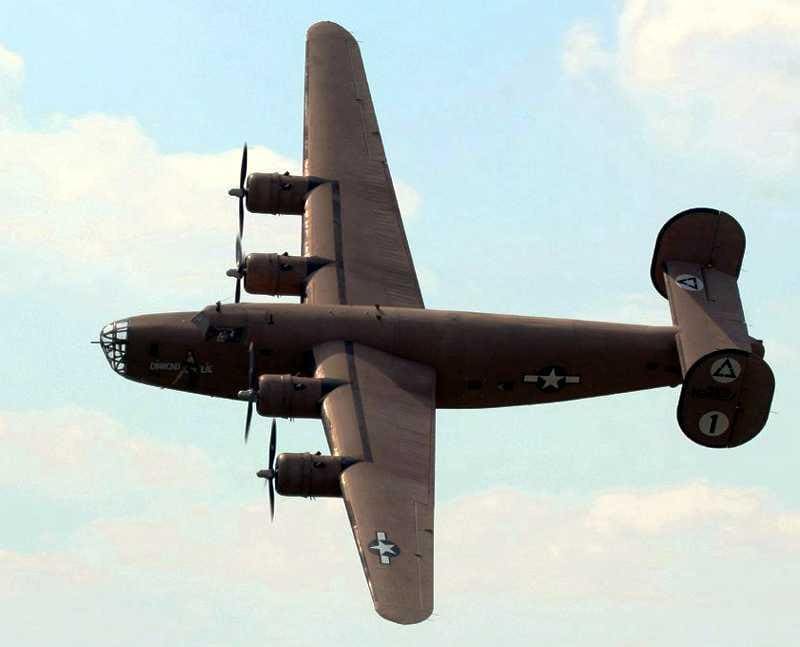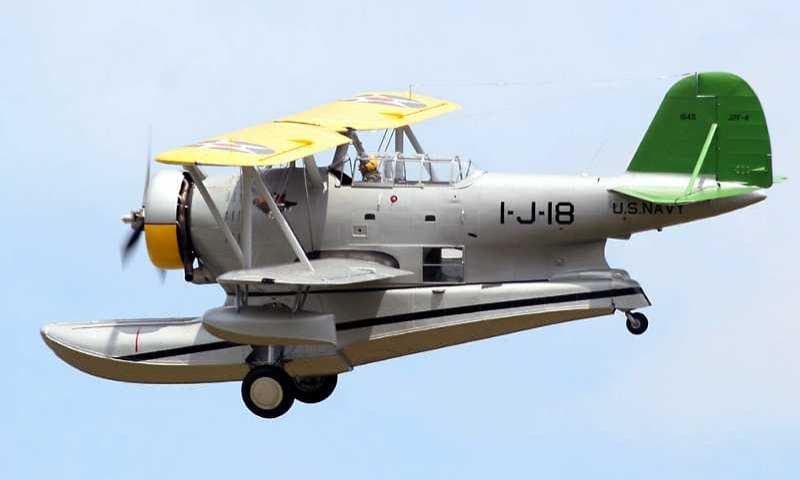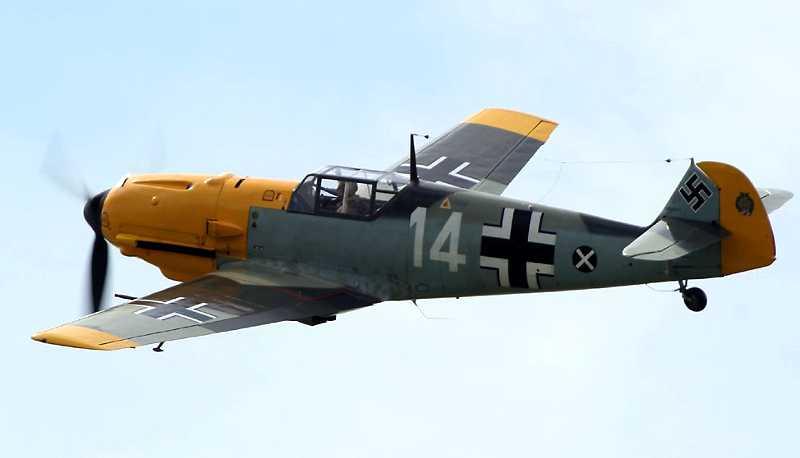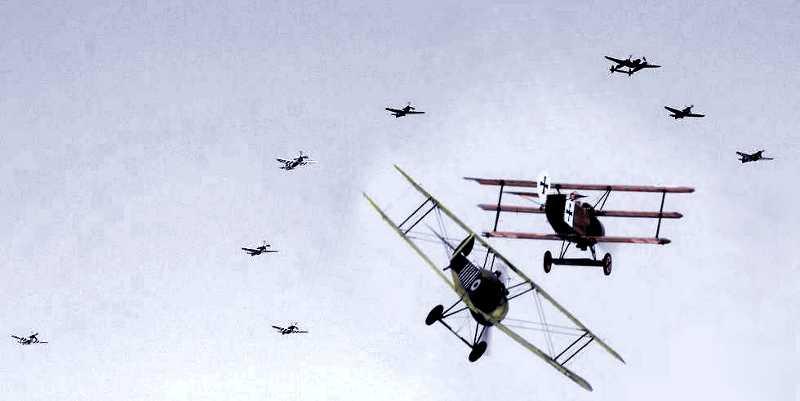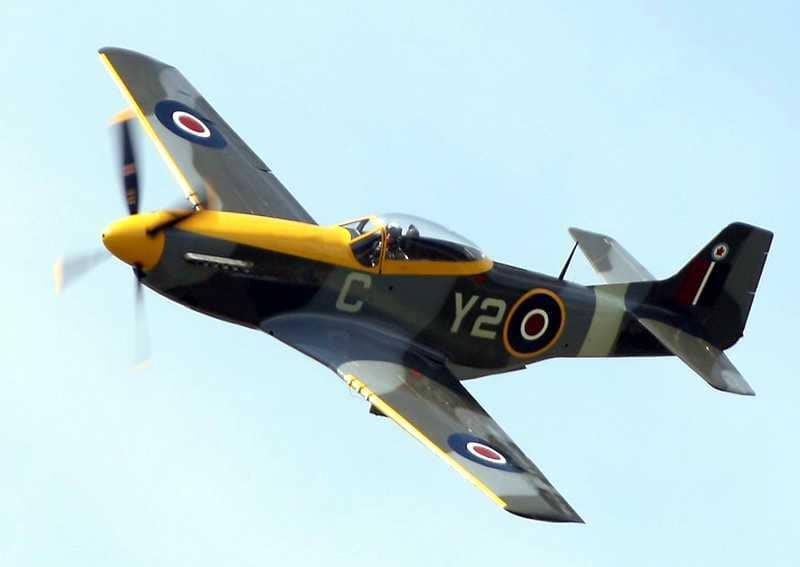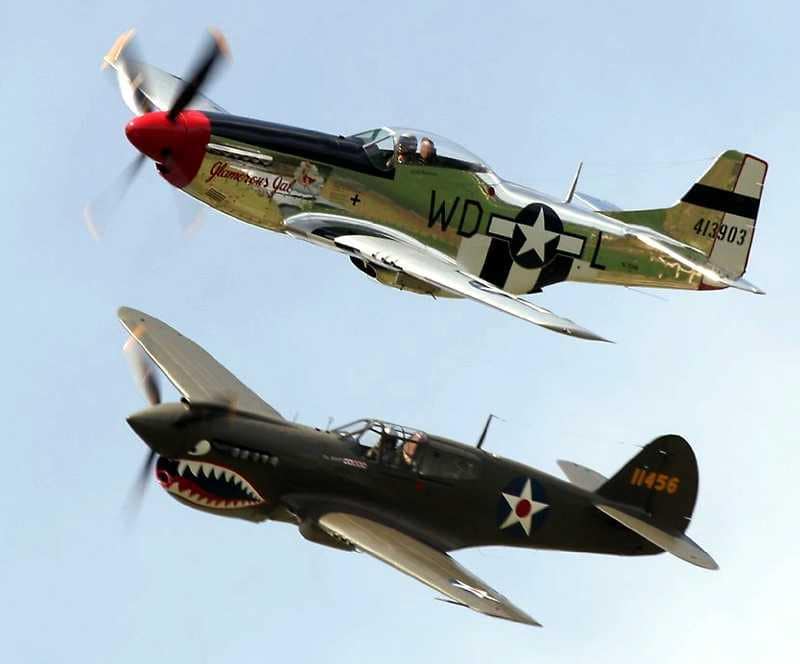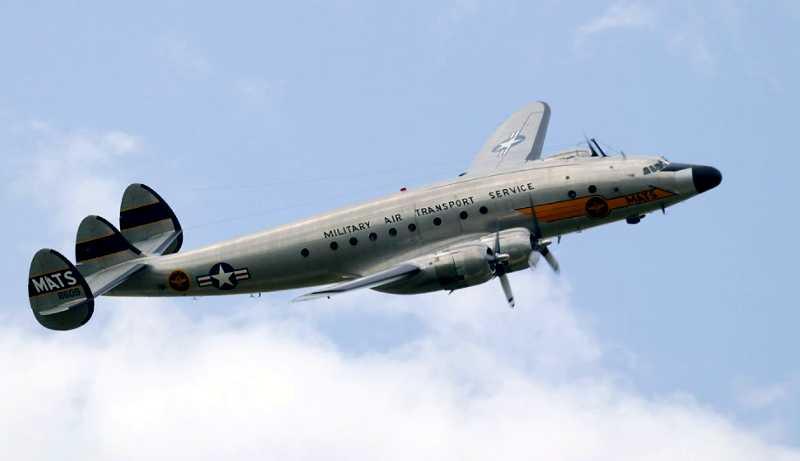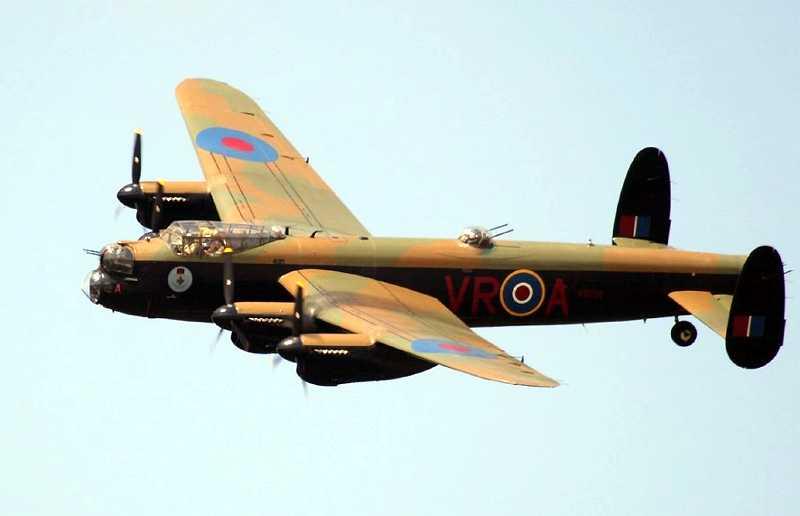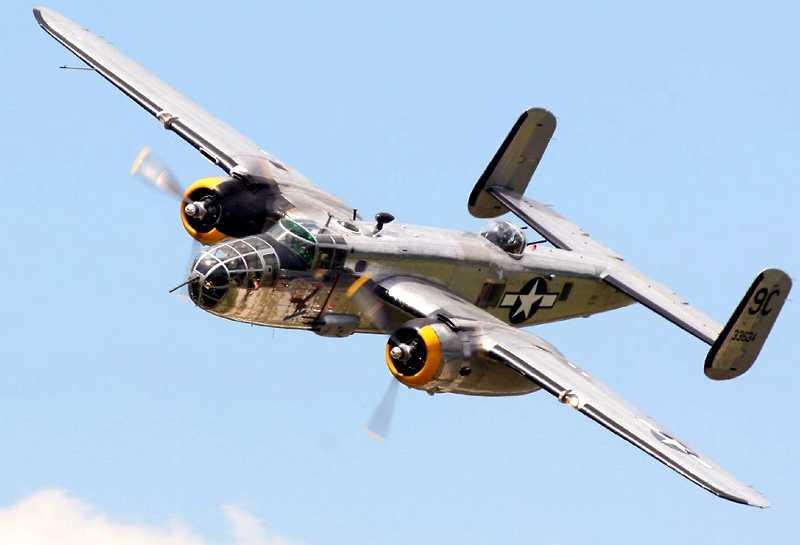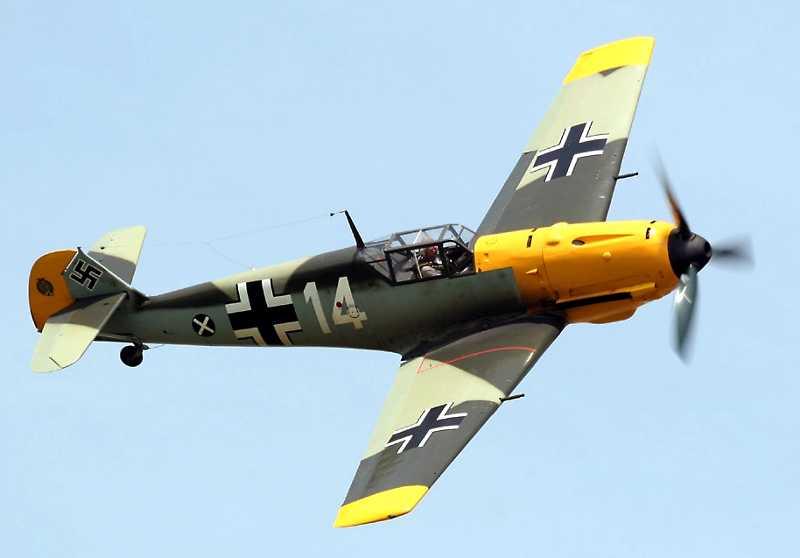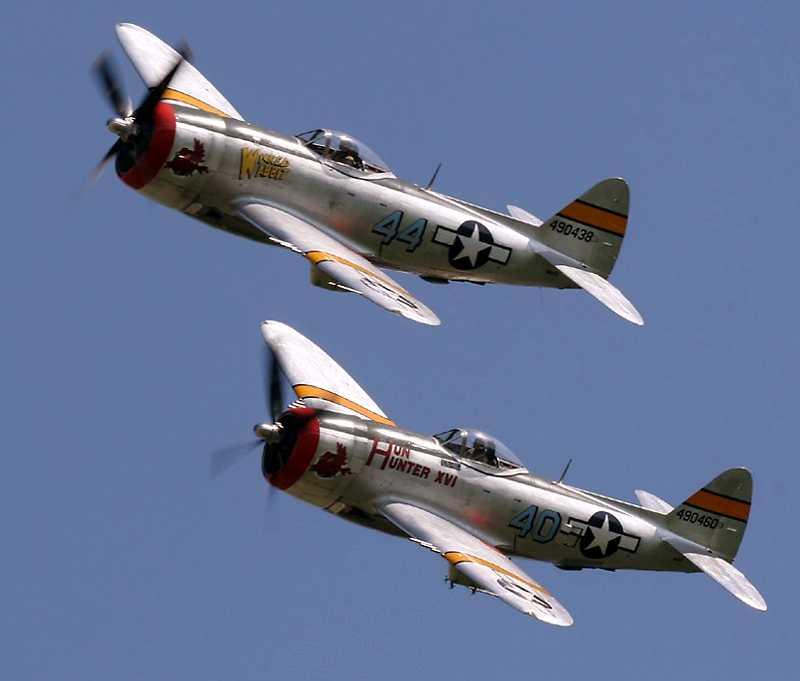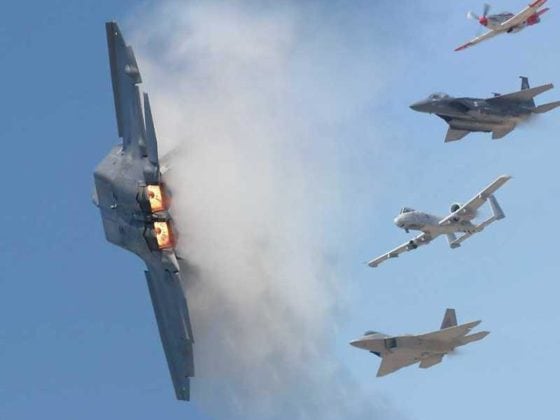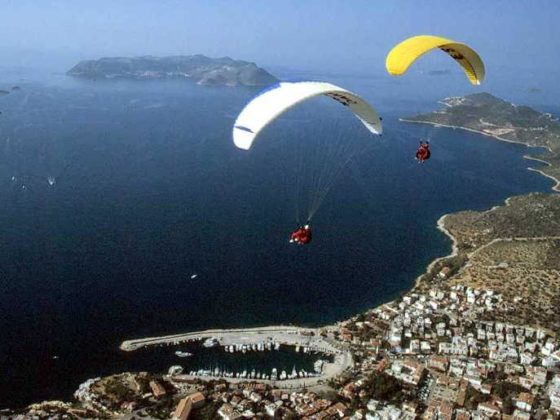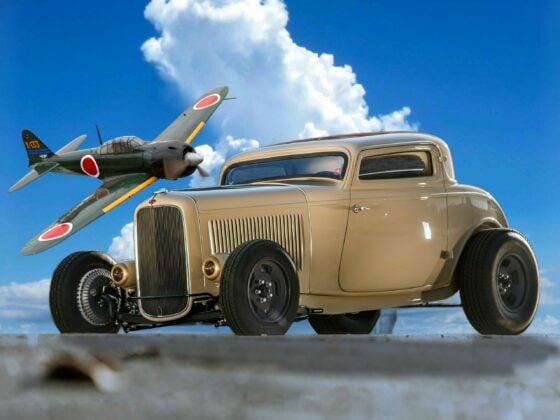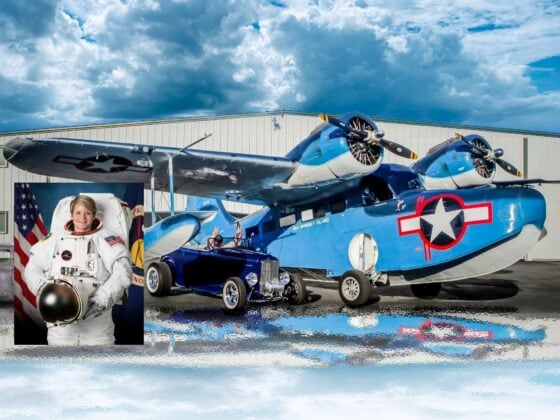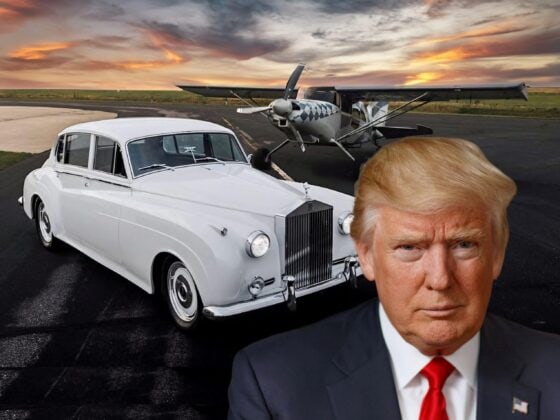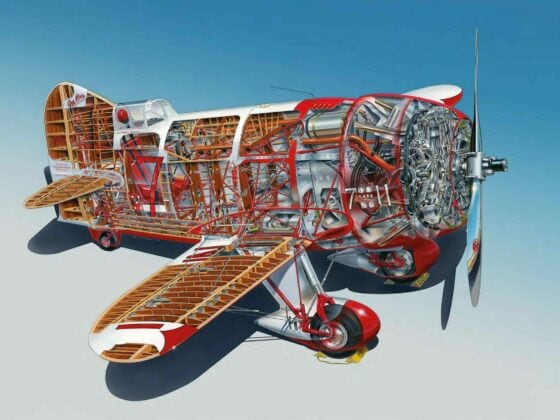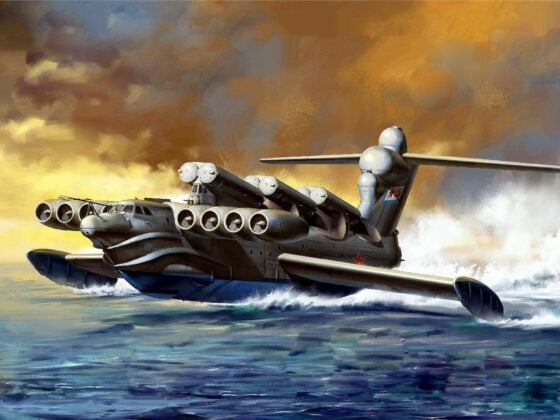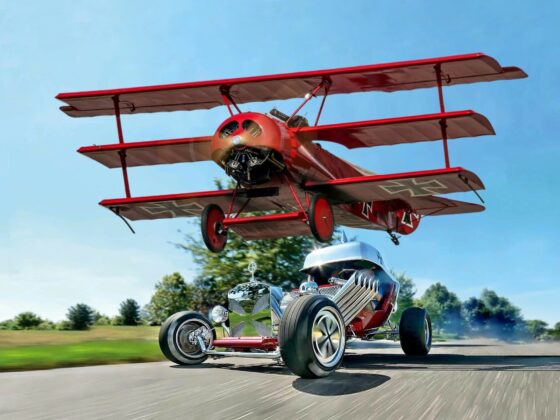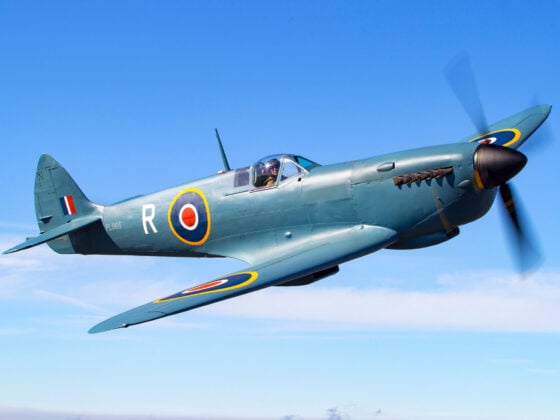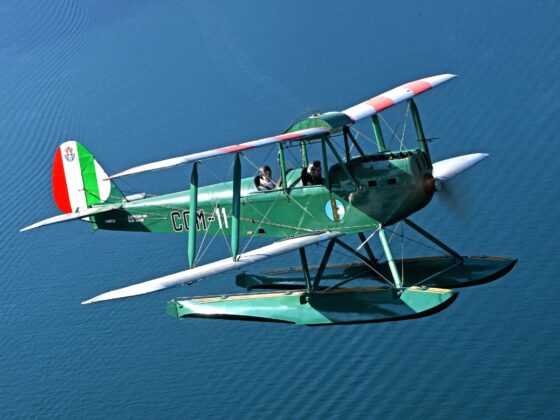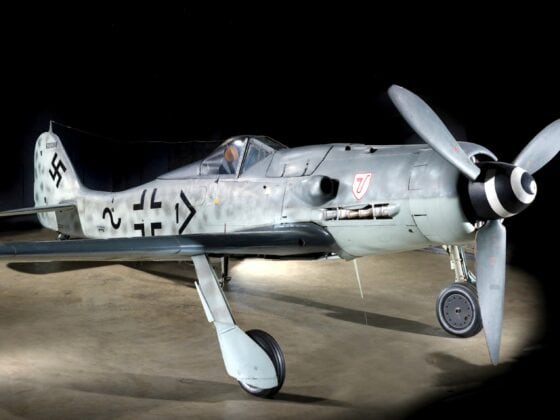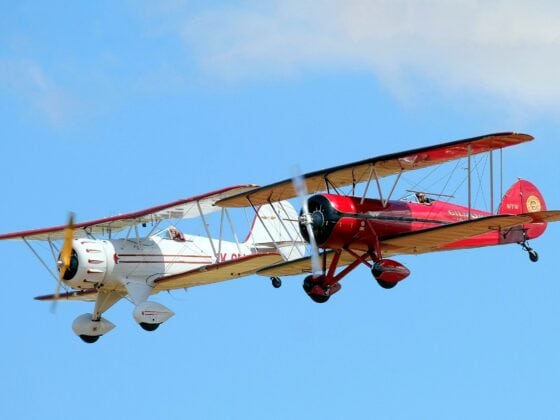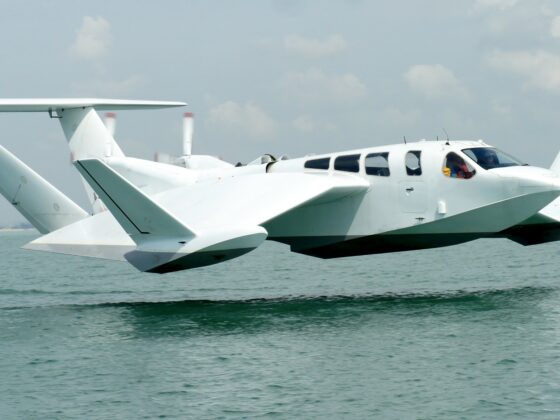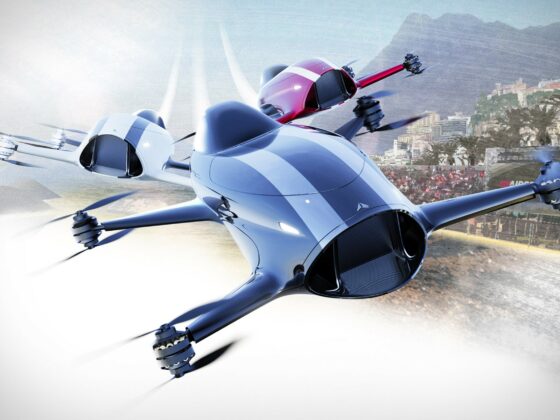One major highlight of the show was an appearance by a Messerschmitt Bf109 fighter owned by a Canadian collector, the first Daimler powered Bf109 I’ve seen since the Warbirds Over Wanaka airshow in New Zealand.
This is a fairly early Bf109E “Emil” model rather than the later and slightly more common Bf109G “Gustav“. The black cross on this plane’s fuselage signifies that it participated in the Spanish civil war in the German Kondor Legion.
The Emil’s first takeoff at the show started to come unstuck almost immediately, and it lurched from side to side several times before the pilot could lift the tail and straighten up.
The Emil has struts on the tailplane like its Me108 forebear and a 1350 horsepower engine rather than the Gustav’s 1850 horsepower, giving a top speed of 560 kph (348 mph) rather than the Gustav’s 685 kph (426 mph).
The instability caused by the Bf109’s narrow undercarriage was a major failing, and some people claim that more were lost in takeoff and landing accidents than were lost in combat.
Sheathed with the corrugated metal sheeting characteristic of most pre-war transport aircraft produced by the Junkers company, the Ju-52 was used primarily as a transport, but also operated as a bomber during the Spanish civil war and during world war two acted as a minesweeper, detonating Allied magnetic mines by flying low over the water while fitted with a huge energized hoop mounted under the aircraft.
The second of the German aircraft to arrive was this beautiful Junkers Ju-52, nicknamed “Auntie Ju” by the Germans and currently operated by the Great Lakes Wing of the Commemorative Air Force.
The P-47s also did a dazzling formation flyby, which apparently was also done last year.
A trio of P-47 Thunderbolts put on a great display during the show, whether chasing the Messerschmitt or doing simulated ground attacks during the battle reenactment, which I don’t remember seeing in previous years.
Rounding out the list of world war two propeller-driven fighters, no fewer than five P-51 Mustangs flew, as well as this far less common P-40 Warhawk.
When I was a boy I made a plastic model of a world war two Grumman Duck floatplane, so this particular aircraft type has more than the usual amount of emotional significance for me.
I didn’t know that any were still flying, so it was a pleasant surprise to learn that one was due at this show.
I caught it arriving on Saturday but it didn’t get much opportunity to display, apart from a single pass when it departed during the Sunday show.
The pilot might well regret making this pass, since he misjudged his approach badly and flew straight over the top of the crowd and the static display area.
This is a serious safety violation at American airshows, so it could well be that he had lots of explaining to do afterwards to the Federal Aviation Authority.
It’s certainly an easy mistake to make in the Duck, because its huge nose, the float and the bottom wing all conspire to block the pilot’s forward vision.
This situation wouldn’t have happened if a banked approach around the corner had been done, which would allow the pilot to see where the crowd is and would also give a much better view for photographers.
Two American Avenger torpedo bombers flew at the show, this one in a North Atlantic paint scheme and another one in a rather unusual and anachronistic pre-war training color scheme.
An excellent collection of world war two bombers was put into the air following the fighters.
It was a real disappointment that “Fifi“, the sole flying B-29 Superfortress was unable to make the show after serious corrosion was found in its wing, however there was a nice group of three B-25 Mitchell medium bombers, a reminder of the 2002 show which had six of this type.
As usual the Mitchell pilots threw their aircraft around very expertly.
The Collings Foundation B-24, which previously flew at this show in the guise of a world war two plane called The Dragon and its Tail, made its appearance in the color scheme of a plane called Witchcraft.
As well as bringing eight B-17s together, airshow organizer Tom Walsh and his colleagues achieved a somewhat similar, but probably easier logistical feat by having the only two remaining flyable B-24 Liberator variants at the show.
It made numerous flights during the show with paying customers who were willing to fork out $400, but perhaps because of these passengers it flew only flat passes.
Previously the whole left side of this plane was covered with sponsors’ names, but now the right hand side is festooned in this way; however there were plenty of opportunities to photograph the unmutilated side, both while taxying and flying.
It didn’t fly on Saturday and it seemed as if it might stay on static display for the entire show.
The other Liberator at the show is actually an LB-30 cargo variant which lacks gun turrets.
However on Sunday it sneaked into the air on a distant runway and made a single glorious banking pass before departing back to its home base.
One of those fluffy white clouds was hiding the sun as it made its run in, but a gap provided a brief opportunity to get at least one well lit photo.
The one at the bottom of this photo, “Yankee Lady” is owned by the Yankee Air Museum and like the B-24 it flew many times with paying customers.
The stars of the show, of course, were the eight B-17 Flying Fortresses which had been brought together, the only American one which wasn’t in attendance was Miss Angela of the Palm Springs Air Museum in southern California.
At the end of each day’s show all of the B-17s were put into the air, flying in a wide circuit before forming up together to fly above the audience in a single stream.
Half of them then returned in a “finger four” formation with one of them pulling up in a “missing man” salute to fallen comrades.
I somehow lost almost all of the photos of the Flying Fortresses parked on the ramp, but I’ll soon put a separate page of all eight of the Flying Fortresses in the air.
The Helldiver was a much larger replacement for the Douglas Dauntless dive bomber.
This is the only Curtiss Helldiver in the world which is still in flying condition.
The gunner at his station in the back of the plane certainly adds something to the photo.
These fighters didn’t do particularly well in the European theater of operations during world war two, largely because German planes could recognize it from far off and outdive it, making it very difficult for the P38 to catch them.
Another rare bird, a P38 Lightning.
In the Pacific, however, the P38 had great success, and America’s greatest ace of world war two, Richard Bong, made all of his kills in a P38.
Forewarned by intercepted and decoded Japanese communications, and equipped with long-range fuel tanks, P38s were also responsible for killing the head of the Japanese navy, Admiral Yamamoto, by shooting down his transport plane.
Like the P38 Lightning, American pilots didn’t have much success in Europe with the P39, however the Russians bought huge numbers of them and used them very successfully in a ground attack role.
The highlight of the show a P39 Airacobra, this is the only airworthy Airacobra, or there are two others.
Because it was built around a very large 37mm cannon which fired through the propeller hub, the P39 was very unusual in having its engine mounted behind the pilot, with a long driveshaft connecting the engine to the propeller.
The news on the grapevine on Sunday was that they were reprimanded by the airshow organizers, so their display that day was far more sedate.
On Saturday I arrived at the airshow late in the morning, but thankfully just in time to see the very good display put on by the Lancaster crew as they banked left and right past the spectators.
This particular Lancaster is one of only two flying, the other one belongs to the Battle of Britain memorial flight based in the UK. The Canadian Lancaster was meant to be at the 2002 Willow Run airshow, but it had a taxying accident and hit a parked aircraft, putting it out of operation for a while.
Sigh, back to planes pointing right !
Another big bird, this time a C121 Constellation, the US military version of the Constellation airliner.
The Constellation would probably beat out any challenge as the most attractive propeller-driven airliner ever built, and perhaps even the most attractive airliner, period.
The curved top and bent nose make it look as sleek as a greyhound, and it performs just as well.
The Commemorative Air Force operates an LB30 Liberator which was damaged during its wartime delivery flight and converted to a cargo plane without gun turrets.
This is the only B24 Liberator bomber in the world which still flies, owned by the Collings Foundation.
The B24 Liberator was built in far greater numbers than its more famous cousin the B17 Flying Fortress, 24,000 Liberators compared to 12,700 Flying Fortresses.
However, it was the B17 which captured the public’s imagination and because of this, and because the B24 had a very narrow wing and was therefore harder to fly, fewer B24s survived after the war than B17s.
The folks at the Yankee Air Museum who organize this show have done a good job of collecting a large number of aircraft of a particular type at the last few shows; last year it was the B25 Mitchell bomber and this year it was the Flying Fortress.
So that’s why there were four Flying Fortresses at this airshow and only one Liberator !
This is the first time I’ve attended a show with so many B17s.
Unfortunately they flew them all in “V” formation on Friday when not many people were around, including myself, so I didn’t get to see what would have been an awesome sight.
This is the museum’s own Flying Fortress, “Yankee Lady“, which flew spectators during the show for a mere $400 each.
The Memphis Belle was the subject of a world war two documentary, and a 1990 movie which recounted its feat.
This plane is painted in the colors of the most famous Flying Fortress of world war two, the “Memphis Belle“, the first B17 to complete its tour of duty of 25 combat missions.
As an earlier model B17F, the Memphis Belle lacks the “chin turret” under the nose of B17Gs like Yankee Lady.
The B17F could carry 8,000 pounds of bombs, twice the capacity of the B17E, but at a cost of flying 70 miles per hour slower, making it easier for enemy aircraft and artillery to shoot down.
As partial compensation for this, the B17F had two more machine guns than the B17E, and the 0.30 inch machine gun carried by the B17E was upgraded to a 0.50 inch machine gun.
This B17G is owned by the Collings Foundation and carries the rather unimaginative name “Nine O Nine“, a reference to the registration number carried on its tail.
The Commemorative Air Force’s B17G “Sentimental Journey” served in the Pacific during the war, later becoming an air-sea rescue plane and finally a fire-fighting “borate bomber” in California.
In particular there was a very good selection of world war two fighters starting with one of the few P-38 Lightnings still in operation, owned by the Planes of Fame museum based in Chino, California.
Despite all of this talk of foreign aircraft, there was still plenty of American hardware on display.
Formerly painted as the world war two aircraft “Porky II“, it turned up at this year’s show in its new incarnation as “23 Skidoo“.
The immaculate aircraft shown here is a testament to the value of this aircraft type, since it’s the definitive P-40N model and was manufactured as late as 1944.
The P-40 was another American fighter active from the start of world war two, and although it wasn’t able to compete against German aircraft like the Bf109 and the Fw190, it still provided excellent service in the North Africa and Pacific theaters of operation.
They flew in formation against the beautiful blue Michigan skies and also performed combat tail chases and ground strafing during the simulated ground battle sequence, which brought together a very large group of re-enactors in German, British and American uniforms, complete with tanks and other equipment for each fighting force.
Two of the P-47 Thunderbolts from last year’s show also turned up for the display.
Rumor had it that the pilot’s friend was in the photo pit and that’s why he did several head-on approaches at a safe distance before peeling away.
During the war the P-47 had no trouble mixing it with the best of Germany’s propeller-driven fighters, and nor did this fighter, a classic P-51D Mustang.
If one classic aircraft is good then two in formation is even better, as the Warhawk and the Mustang ably demonstrated.
The replacement of the American designed Alison engine with a British designed Rolls-Royce Merlin was also a vital step in the transformation of the Mustang from an average performer to a war winner.
This Mustang in Canadian air force colors was a very nice reminder that the North American company originally designed and built the P-51 for the British and allied Empire forces.
Like the P-40, the Hurricane wasn’t on equal footing against the latest German fighters, but it continued to serve from the beginning of the war to its end.
This Hawker Hurricane is another classic British fighter owned by the Russell Group.
It’s said that the Hurricane flew combat in more theaters than any other British fighter, and also that during the Battle of Britain it destroyed more German aircraft than all other British aircraft and other air defenses combined.
The Hurricane shown here has only machine gun armament, which was typical for these aircraft in the early part of the war, with up to twelve 0.303 guns in the wings.
Like early Hurricanes, the Spitfire started out with eight 303 caliber machine guns, but these were soon augmented with cannon in order to equal or better the firepower of similarly armed German aircraft.
The Russell Group also supplied this nice Mk IX Spitfire, complete with wing mounted cannons.
Although it first flew around the same time as the Hurricane, the Spitfire was markedly superior in performance, so during the Battle of Britain it tackled the German fighters while the more numerous Hurricanes went after the bombers.
Early plans call for about 20 of these American-designed medium bombers to be brought together at next year’s show, which will be the most B-25s gathered in one place since the 18 or so used in the movie “Catch 22“.
If 2005 was the Year of the Flying Fortress at the Thunder Over Michigan airshow, then 2007 will be the Year of the Mitchell.
Famous for the symbolic raid against Japan launched from the USS Hornet a few months after Pearl Harbor, the B-25 went on to make a real difference in Europe, North Africa and the Pacific.
The Mitchell was certainly an important and effective world war two bomber, with a total of over 10,000 eventually built.
Like the B-17, the B-25 received significant development as the war went on; the B-25D shown in the previous photo became the B-25J shown here, with the addition of a tail gun and a two gun “fuselage package” on each side of the nose.
Designed for strafing and skip-bombing attacks, solid-nose B-25Js carried the most guns of any world war two bomber, with 8 in the nose, 4 in the fuselage packages, 2 in the top turret, 2 in the tail position and 2 in the waist positions, all of 0.50 caliber.
As well as the A-10s, a B-2 Spirit “stealth bomber” made one of the unbearably tame high flat passes which they’re required to do for fear of anything going wrong, and this Fighting Falcon of the Viper East F-16 demonstration team did an anything but tame display of its prowess, to the obvious delight of the crowd.
The two primary organizers of the show, Michael Luther and Kevin Walsh are obviously true warbird fans, but they’re also not at all adverse to modern military types.
The Fighting Falcon also teamed up with the Mustang and the Lightning in one of the air force’s excellent Heritage Flights, which show off historic types alongside modern weaponry.
The Old Dominion Squadron of the Commemorative Air Force put their S-2 Tracker on static display, and two Grumman Avengers flew during the weekend, as did Tom Duffy’s FG-1D Corsair called “Marine’s Dream“.
The navy wasn’t forgotten either !
Although they were on the list of expected arrivals, Chuck Greenhill’s Grumman Goose seaplane and Hawker Sea Fury fighter finally weren’t able to make it.
First flown in 1932, the P-26 was America’s first all-metal monoplane fighter, and some were still serving with the Philippines army in 1941, and even managed to shoot down some Japanese aircraft.
For many people this recently restored P-26 Peashooter was the highlight.
The Zero was 25 mph faster in level flight than its main American opponent, the Wildcat, and was also more maneuverable and more heavily armed, with two 20mm cannon and two 7.7mm machine guns compared to the Wildcat’s four 0.50 inch machine guns.
This original Mitsubishi Zero fighter, is one of only two in the world still flying and the only one with a Japanese engine.
However the Zero was much more lightly constructed and therefore more vulnerable to enemy gunfire.
It’s a bit incongruous since the Mustang entered service considerably later than the Zero and was an air force type, whereas the Zero was primarily a naval fighter.
Here’s one of the more unusual formations you’re ever likely to see, the Zero with the P-51A Mustang.
Actually, though, Richthofen made the great majority of his kills in other aircraft types, and the Germans eventually grounded the Dr.1 after several broke up in mid-air because of structural failure.
The airshow excels in world war two military types, but other displays were also flown to keep the crowds happy, like this world war one pairing of a British Sopwith Camel fighter in hot pursuit of what was probably the most famous German fighter of the period, the Fokker Dr.1 triplane, painted in the scheme used by the famous Flying Circus commanded by Baron von Richthofen.
With only 320 built, no original Fokker triplanes survive.
With about 5,500 built the Camel was far more successful than the Fokker, however the Camel was a very nasty plane to fly and killed many of its pilots.
Both the Fokker and the Camel had rotary engines, which meant that the propeller was attached to the engine, which spun around while the crankshaft was attached to the fuselage and remained stationary.
However this type of engine had a strong gyroscopic effect on the aircraft, making it turn sharply to the right with a nose down attitude, but also making it turn only slowly to the left with a nose up attitude – and even when turning right the pilot had to use left rudder to counteract the plane’s natural tendencies.
When flying level the Camel was noticeably tail heavy, and if it stalled then it immediately entered a spin which it was exceptionally difficult to get out of.
Rotary engined aircraft like these had no throttles, so pilots had to “blip” their engines in order to reduce speed enough for a safe landing.
The two aircraft at the show demonstrated this technique while they were circling around, cutting and restarting the engines over and over.
The truck races various aircraft at different shows, and somehow the plane always loses, probably because he’s being paid to !
The Shockwave truck “racing” the Red Bull MiG 17 fighter.
Collings Foundation TP-51C at MGY from PSGProductions on Vimeo.
The truck has a high enough power to weight ratio to beat its competitors if they were both doing a standing start, but there’s no way it can win as it did here from a standing start against an aircraft that’s already in the air.
The F4U Corsair was the first American fighter to exceed 400 miles an hour, which is remarkable considering that it was designed to operate from aircraft carriers and therefore had certain compromises in its design, none more obvious that the bent “gull” wing, which was necessary to ensure sufficient clearance for the huge propeller as the plane landed on a heaving deck.
Ironically, despite the plane’s excellent flight qualities the navy refused to use it from carriers for more than a year after its introduction, instead employing it only from land bases.
The main problem was that the pilot had very little forward visibility to enable him to land on deck, since he was seated so far back and the nose was so long.
In a continuing tradition of aircraft carrier innovations, the British resolved this problem by instructing its pilots to fly a curved approach path to land, instead of the straight-in approach used by other aircraft types, and in this way the pilot could look out the side of his window to judge his landing.
It seems an unlikely solution, but in practice it worked well, and eventually the US Navy adopted the same technique.
However, the EAA couldn’t resist improving on Lindbergh’s plane slightly, by adding windows at the front !
To commemorate the centenary of flight, the Experimental Aircraft Association (EAA) built and flew a replica of the “Spirit of St Louis” in which Charles Lindbergh became the first man to cross the Atlantic ocean non-stop from New York to Paris.
The original aircraft was designed primarily around the need to carry large amounts of fuel, which forced Lindbergh to use a periscope to land his plane.
And furthermore, it’s a Vietnam era AC-47 “Spooky” gunship – the “A” standing for “attack“.
This is a military version, so it’s not a DC-3, it’s a C-47.
Fifty three C-47s were converted to AC-47s during the Vietnam war, each armed with three 7.62mm gatling guns.
They would circle around an enemy position and rain down fire against it.
Crews and forces on the ground called the AC-47s “Spooky” or “Puff the Magic Dragon“.
The Gladiator was a real export success, with 747 planes eventually being flown by Australia, Belgium, China, Finland, Greece, Iraq, Ireland, Latvia, Lithuania, Norway, Portugal, South Africa, Sweden and… the German Luftwaffe, who captured several of the Baltic planes intact and used them as glider and target tugs until the end of 1944.
